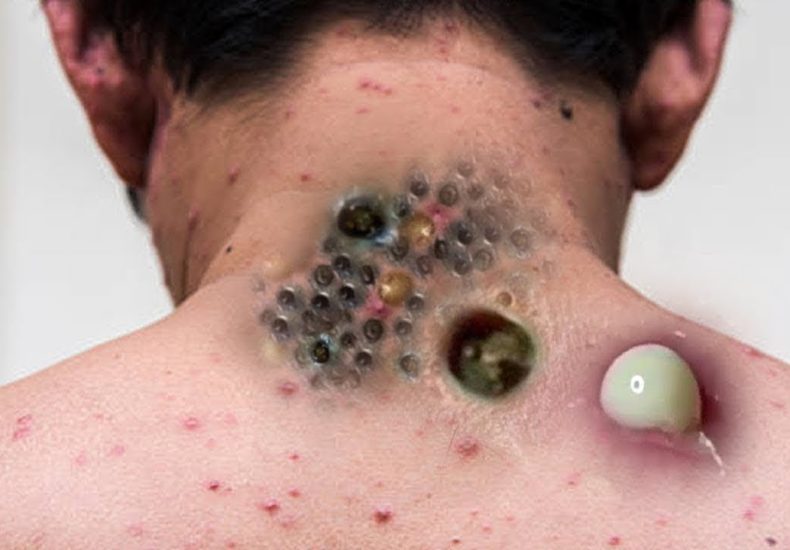
pimples and acne
pimples and acne
Please scroll down to watch the video.👇👇
For Mild Acne (occasional pimples):
1. Cleanse gently (2x daily):
-
Use a gentle, non-comedogenic cleanser (no harsh scrubs).
-
Avoid overwashing — it can irritate skin and cause more breakouts.
2. Use over-the-counter treatments:
-
Benzoyl peroxide: Kills bacteria and reduces inflammation.
-
Salicylic acid: Helps unclog pores.
-
Adapalene (Differin): A gentle retinoid that helps skin turnover and prevent clogged pores.
3. Moisturize:
-
Choose oil-free or “non-comedogenic” moisturizers to avoid clogging pores.
4. Avoid touching your face:
-
Picking or squeezing pimples worsens inflammation and can lead to scars.
For Moderate to Severe Acne:
1. See a dermatologist:
-
They may prescribe topical retinoids, antibiotics, or hormonal treatments (like birth control pills or spironolactone for women).
2. Oral medications:
-
Antibiotics (like doxycycline) to reduce bacteria and inflammation.
-
Isotretinoin (Accutane) for severe, cystic acne — a powerful treatment with strict guidelines.
Lifestyle Tips:
-
Keep hair clean and off your face.
-
Change pillowcases regularly.
-
Avoid heavy makeup or remove it thoroughly before bed.
-
Manage stress — it can trigger breakouts.
Treating pimples and acne effectively requires a tailored approach based on the severity and type of acne. Below is a comprehensive guide incorporating evidence-based treatments and references from reputable sources.
🧼 Daily Skincare Routine
1. Gentle Cleansing:
-
Use a mild, non-comedogenic cleanser twice daily to remove excess oil and impurities without irritating the skin.
2. Non-Comedogenic Moisturizers:
-
Apply oil-free moisturizers to maintain skin hydration and barrier function.
3. Sun Protection:
-
Use broad-spectrum sunscreen daily to protect the skin and prevent post-inflammatory hyperpigmentation.
🧴 Topical Treatments
1. Benzoyl Peroxide (BPO):
-
An over-the-counter topical medication approved by the FDA for treating acne vulgaris.
-
It exhibits bactericidal properties, specifically targeting Cutibacterium acnes within the skin and hair follicles.
-
A beta-hydroxy acid that penetrates the hair follicle and oil gland, dissolving acne-causing blockages of dead skin cells, oil, and other debris.
3. Adapalene:
-
A topical retinoid that changes how skin cells grow and shed, preventing clogged pores and reducing inflammation.
💊 Oral Medications
1. Oral Antibiotics:
-
Tetracyclines, notably doxycycline and minocycline, are preferred first-line treatments for moderate to severe acne due to their established safety and efficacy.
-
An oral retinoid approved by the FDA in 1982 for treating severe nodular acne unresponsive to conventional therapy.
-
It affects sebaceous glands, leading to long-term remission or significant improvement in many patients.
🧬 Hormonal Therapies
1. Combined Oral Contraceptives:
-
Effective in treating acne in women by regulating hormones that can contribute to acne formation.
2. Spironolactone:
-
An anti-androgen medication that can reduce oil production and is used off-label for treating acne in women.
🧘 Lifestyle and Home Care
1. Diet:
-
Some studies suggest that low-glycemic diets may help reduce acne severity.
2. Stress Management:
-
Stress can exacerbate acne; practices like meditation and regular exercise may help.
3. Avoid Picking or Squeezing Pimples:
-
This can lead to scarring and further inflammation.
🧑⚕️ When to Consult a Dermatologist
-
If over-the-counter treatments are ineffective after several weeks.
-
For severe, cystic, or nodular acne.
-
If acne is causing significant emotional distress or scarring.
For more detailed information, you can refer to the American Academy of Dermatology’s guidelines on acne management:
-
Leave a Reply